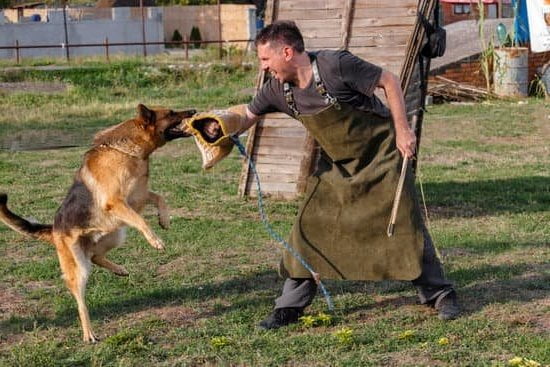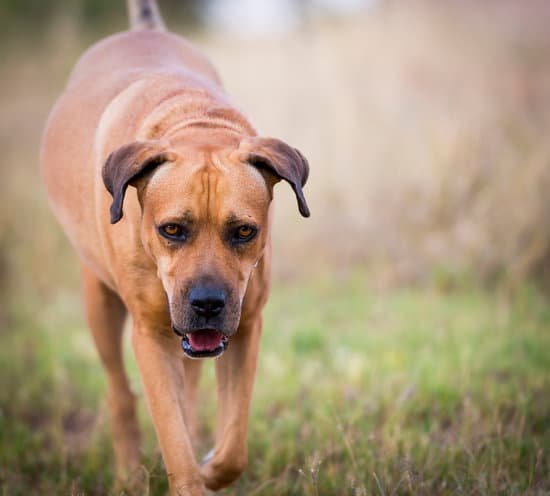Are you wondering how to use a dog crate to house train your furry friend? A dog crate can be an incredibly effective tool for house training, providing a safe and secure space for your pup while also helping to establish good behavior. In this article, we will explore the ins and outs of using a dog crate to house train, from understanding its purpose to troubleshooting common challenges.
First and foremost, it’s essential to grasp the underlying purpose of using a dog crate for house training. By creating a designated space for your dog, a crate can aid in teaching them bladder and bowel control, as well as promoting a sense of security and comfort. Additionally, it can prevent destructive behaviors and keep your pup safe when you’re unable to supervise them.
Next, we’ll delve into the key factors to consider when selecting the right size and type of crate for your dog. Whether you have a tiny puppy or a larger adult dog, choosing the appropriate crate is crucial for successful house training. We’ll provide guidance on finding the perfect fit for your furry companion and ensuring that their crate is comfortable and inviting.
Furthermore, we’ll explore how to introduce your dog to the crate in a positive manner and guide you through the step-by-step process of crate training for both puppies and adult dogs. From utilizing positive reinforcement to avoiding common mistakes, we’ll equip you with all the necessary tools to effectively incorporate a dog crate into your house training routine.
Selecting the Right Size and Type of Crate for Your Dog
When it comes to using a dog crate for house training, one of the most important factors to consider is selecting the right size and type of crate for your dog. The crate should be a place where your dog feels safe and secure, not stressed and confined.
It is essential to choose a crate that provides enough space for your dog to stand up, turn around, and lie down comfortably. For a puppy, you may need to start with a smaller crate and upgrade as they grow. Wire crates are a popular choice because they allow for good ventilation and visibility, while plastic crates can provide more of a den-like environment that some dogs prefer.
In addition to selecting the right size and type of crate, it’s important to make the crate comfortable and inviting for your dog. This may include adding a cozy blanket or bed inside the crate, along with some of their favorite toys. By making the crate an appealing space for your dog, they will be more likely to view it as their own personal sanctuary rather than a form of punishment.
To ensure you select the correct size, measure your dog from the tip of their nose to the base of their tail while standing with their head in an upright position. You should then add 2-4 inches on top of this measurement when selecting a suitable length for your crate.
Introduction to Crate Training for Puppies and Adult Dogs
Crate training is an effective method for house training puppies and adult dogs. The use of a dog crate helps to create a safe and comfortable space for your pet while also aiding in the process of potty training. When used correctly, a crate can become a valuable tool in teaching your dog proper behavior and providing them with a sense of security.
The key to successful crate training is to introduce the crate in a positive way, making it a desirable place for your dog to spend time. It’s important to understand that the crate should never be used as a form of punishment, but rather as a tool for teaching and guiding your dog’s behavior. With the right approach, your dog will come to see their crate as their own personal den.
When starting crate training, it’s essential to select the right size and type of crate for your dog. The crate should be large enough for them to stand up, turn around, and lie down comfortably, but not so large that they have ample space to eliminate in one corner without being near it.
By choosing the appropriate crate size and type, you can ensure that your dog sees their crate as a cozy and secure space, making it easier for them to accept it as part of their routine. In the following sections, we’ll delve deeper into how to use a dog crate to house train puppies and adult dogs effectively.
Step-by-Step Guide to Introducing Your Dog to the Crate
Introducing your dog to a crate can be a crucial step in house training, providing them with a safe and secure space of their own. However, it’s important to introduce the crate in a positive and gentle manner to ensure that your dog views it as a place of comfort rather than confinement.
Here is a step-by-step guide on how to use a dog crate to house train:
1. Choose the Right Location: Select a quiet and low-traffic area in your home for your dog’s crate. This will help them feel safe and secure while they become accustomed to their new environment.
2. Make the Crate Comfortable: Line the crate with comfortable bedding or blankets to make it inviting for your dog. You can also place some of their favorite toys or treats inside to encourage them to explore the space.
3. Introduce Your Dog Gradually: Start by leaving the door of the crate open and allowing your dog to explore it at their own pace. You can encourage them with treats and praise when they show interest in the crate.
4. Mealtime in the Crate: Once your dog is comfortable entering the crate voluntarily, begin feeding them their meals inside. This will create positive associations with the crate and reinforce it as a positive space for your dog.
5. Closing the Door: After your dog is comfortably eating in the crate, start closing the door for short periods while they eat. Gradually increase the time with each meal until they are relaxed with being inside with the door closed.
6. Quiet Time in Crate: As your dog becomes more accustomed to being in the closed crate, start adding short periods of quiet time where they are left alone but still within eyesight.
By following these steps, you can gradually introduce your dog to their new living space without causing any undue stress or anxiety, setting them up for successful crate training and house training overall.
Using the Crate for Nighttime and Daytime Training
When it comes to using a dog crate for house training, consistency is key. This is especially true when establishing a routine for nighttime and daytime crate training. By creating a structured schedule, you can help your dog understand when it’s time to go outside for potty breaks and when it’s time for rest inside the crate.
For nighttime training, it’s important to take your dog outside right before bedtime to eliminate any need for potty breaks during the night. Once your dog is in the crate, avoid letting them out unless absolutely necessary, as this can disrupt the training process. During the day, make sure to take your dog outside at regular intervals and immediately after they have been let out of the crate.
Managing Your Dog’s Energy Levels During Crate Training
Dogs are naturally active animals, so it’s crucial to provide them with sufficient physical and mental stimulation during crate training. This can involve engaging in playtime or short walks before placing them in the crate. Additionally, providing interactive toys or puzzle feeders within the crate can keep your dog occupied and prevent boredom.
It’s also essential to avoid using the crate as a form of punishment or confinement for extended periods. This can lead to anxiety and reluctance on your dog’s part to enter the crate willingly. Instead, make use of positive reinforcement techniques such as offering treats or praise when your dog enters the crate voluntarily.
Transitioning from Daytime Crate Training to Freedom in the Home
As your dog becomes more accustomed to utilizing the crate for daytime training, you can gradually increase their freedom within the home under supervision. This allows your dog to become more comfortable with being out of the crate while still maintaining good behavior.
Once you notice that your dog consistently demonstrates proper potty habits and good behavior outside of the crate, you can consider leaving them unsupervised in certain areas of the home. However, it’s crucial to maintain an open line of communication with your pet through commands and positive reinforcement in order to ensure continued success with house training.
By following these guidelines for using a dog crate during both nighttime and daytime training, you can effectively reinforce positive behaviors in your pet while promoting a comfortable living environment within your home.
Utilizing Positive Reinforcement and Rewards in Crate Training
Positive reinforcement is a key component in any successful dog training, including crate training. When it comes to crate training your dog, positive reinforcement involves rewarding your furry friend for displaying the desired behavior of going into the crate or staying inside it calmly.
This can be done through verbal praise, treats, toys or any other rewards that your dog finds motivating. When your dog associates the crate with positive experiences and rewards, they will be more likely to view it as a safe and comfortable space.
To effectively utilize positive reinforcement in crate training, it’s important to start by establishing a positive association with the crate. Place some treats or toys inside the crate and allow your dog to voluntarily explore the space. Once they enter the crate on their own accord, praise them and offer a reward. With consistency, your dog will begin to understand that good things happen when they are inside the crate.
In addition to using treats and toys as rewards for good behavior around the crate, verbal praise is also an important form of positive reinforcement. When your dog enters the crate willingly or remains calm inside it, use an enthusiastic tone to verbally praise them. Dogs respond well to hearing their owners’ approval, so offering verbal praise along with treats can further reinforce the idea that being in the crate is a positive experience.
| Positive Reinforcement Methods | Description |
|---|---|
| Treats | Using small bits of treats to reward your dog for entering or staying inside the crate |
| Verbal Praise | Using an enthusiastic tone to verbally praise your dog for good behavior around the crate |
| Toys | Allowing your dog access to a favorite toy when they are inside the crate as a form of reward |
Common Mistakes to Avoid When Using a Dog Crate for House Training
When learning how to use a dog crate to house train, it’s important to be aware of common mistakes that many pet owners make. Avoiding these pitfalls will help ensure that your dog’s crate training is effective and stress-free for both you and your furry friend.
One common mistake to avoid is using the crate as a form of punishment. The crate should be seen as a safe and comfortable space for your dog, not a place where they are sent when they misbehave. Using the crate in this way can lead to negative associations and anxiety for your pet.
Another mistake is leaving your dog in the crate for extended periods of time. While the crate can be an effective tool for house training, it should not be used as a long-term confinement solution. Dogs need plenty of exercise, mental stimulation, and social interaction to thrive, so it’s important to provide opportunities for your pet to stretch their legs and interact with their human family members.
Lastly, one must avoid rushing the process. House training takes time and patience, so it’s important not to rush or push too hard. It’s crucial to understand that every dog is unique, and some may take longer than others to acclimate to crate training. By avoiding these common mistakes, you can set your dog up for success in their house training journey and build a positive relationship with their crate.
Gradually Fading the Use of the Crate as Your Dog Becomes House Trained
Transitioning to Freedom
As your dog becomes more consistently reliable with their potty training and behavior, it is time to gradually decrease their dependence on the crate. This process should be done slowly and in a controlled manner to prevent any regression in their house training progress. Start by allowing short periods of supervised freedom outside of the crate in a designated area of the house. Keep a close eye on your dog during this time and be ready to intervene if necessary.
Monitoring Progress
Pay close attention to how your dog behaves during these brief periods of freedom. If they continue to display good potty habits and do not engage in destructive behavior, you can gradually increase the length of time they spend outside of the crate. Keep a watchful eye on any signs that they may need to eliminate, and promptly take them outside for a bathroom break as needed.
Evaluating Readiness
As your dog demonstrates consistent reliability with their house training, you can begin leaving them unsupervised for short periods while you are still at home. Make sure to keep the area where they are free from any items that could be potentially harmful or that they could damage. It’s important to remember that every dog is different, so be patient and attentive as you assess their readiness for increased freedom.
If accidents occur or undesirable behavior reappears, it may be necessary to temporarily revert back to more frequent crating until your dog is ready for further independence. Gradually increasing their freedom within the home will help avoid setbacks in their training.
By following these steps, you can ensure a smooth transition from using a crate for house training purposes to granting your furry friend more freedom within your home.
Troubleshooting Common Challenges in Crate Training
When using a dog crate to house train your furry friend, you may encounter some common challenges along the way. It’s important to address these challenges promptly in order to ensure successful crate training for your dog.
One common challenge is separation anxiety, which can cause your dog to whine, bark, or become destructive when left alone in the crate. To address this, it’s crucial to gradually desensitize your dog to being alone in the crate by leaving them for short periods of time and gradually increasing the duration as they become more comfortable.
Another challenge that pet owners often face is resistance to entering the crate. If your dog is hesitant to go into the crate, it’s essential to make the crate a positive and inviting space for them. You can do this by placing their favorite toys or treats inside the crate and using positive reinforcement techniques to encourage them to enter willingly. Additionally, avoid forcing your dog into the crate as this can create negative associations with it.
Some dogs may also have accidents inside the crate during the house training process. This could be due to several reasons such as not being let out frequently enough, anxiety, or medical issues. It’s important to rule out any potential medical issues with excessive accidents and establish a consistent potty schedule for your dog. Additionally, make sure that you are providing plenty of opportunities for your pup to relieve themselves outside of the crate.
By addressing these common challenges in crate training, you can set your dog up for success in their house training journey. Remember that patience and consistency are key when using a dog crate for house training. With time and dedication, you will see progress and ultimately reap the long-term benefits of successful house training for your beloved pet.
The Long-Term Benefits of Using a Dog Crate for House Training
In conclusion, using a dog crate for house training can provide long-term benefits for both you and your furry companion. By understanding the purpose of the crate and selecting the right size and type for your dog, you can create a positive association with the crate and establish a safe space for them. Introducing crate training for puppies and adult dogs can help in their overall behavior and obedience.
One of the key components in successfully utilizing a dog crate for house training is to follow a step-by-step guide to introducing your dog to the crate and using it for both nighttime and daytime training. Positive reinforcement and rewards play a crucial role in making the crate a comfortable place for your dog. It’s important to avoid common mistakes such as using the crate as punishment or leaving your dog crated for too long.
As your dog becomes house trained, gradually fading the use of the crate can be easily achieved with patience and consistency. Moreover, troubleshooting common challenges in crate training will help ensure that your dog feels secure when in the crate. Ultimately, the long-term benefits of using a dog crate for house training include fostering good behavior, providing a safe haven for your pet, and creating a harmonious living environment for both you and your canine companion.
Frequently Asked Questions
Can You Use a Dog Crate for Potty Training?
Using a dog crate for potty training can be an effective tool. It helps to confine the dog when unsupervised, making it easier to predict when they need to go and take them outside in time.
How Long Do You Leave a Dog in a Crate for Potty Training?
The length of time you leave a dog in a crate for potty training depends on their age and bladder control. A general guideline is one hour for every month of age, but never longer than 8 hours.
How Do I Transition My Dog From Crate to House?
Transitioning your dog from crate to house involves gradually increasing their freedom in the house. Start by leaving them out for short periods while supervised, gradually increasing the time as they demonstrate good behavior and reliability with potty training.

Welcome to the blog! I am a professional dog trainer and have been working with dogs for many years. In this blog, I will be discussing various topics related to dog training, including tips, tricks, and advice. I hope you find this information helpful and informative. Thanks for reading!





